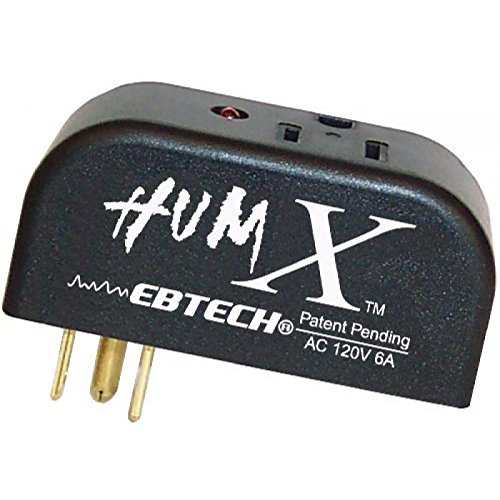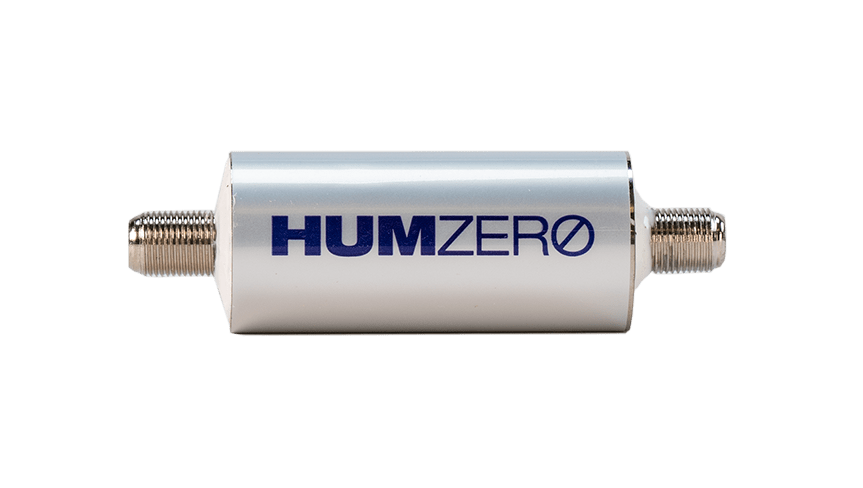Btt 90 Headphones What to Do if They Don t Rurn on Again
This is the extended version. There is a shorter iii-step version available here. Very few sound or video systems are dead quiet. At that place are usually ever a few hum related problems. If your organization has a bit of hum , is information technology the transformer or a ground loop? How practise you determine the source of hum and what can you do about information technology? Sometimes hums and buzzes are quite obvious, sometimes non. The 'hum noise' usually comes in two flavors, a low non-irritating drone (50 or sixty Hz) or a slightly higher pitched buzz or raspy/irritating 'angry insect' audio (100 or 120 Hz). Video hum is usually seen as diagonal bars beyond the Television or screen of a projector. The low non-irritating drone hum is commonly internal to the equipment and is mechanical in nature. The higher pitched and more irritating 'buzz' is typically found emanating from the loudspeakers and is usually caused by a basis loop. The most mutual cause of hum is the ground loop – fortunately it is also the easiest to solve. Start, you should determine the type of hum yous are dealing with. There are two basic types: 120Hz buzz, typically caused by basis loops, and 60Hz hum, typically a result of poor shielding, cablevision issues, or close proximity to stiff magnetic fields. To determine which of these you have, mind to the two examples. 60Hz hum caused by shut proximity to other equipment or cables problems: The specified audio id does not exist. 120Hz hum/buzz typical of ground loop issues. We beginning demand to divide our search into two categories; mechanical or electrical induced hum. A mechanically induced hum or buzz is as easy to make up one's mind. Place your ear very near to each slice of your electric equipment and once more, listen for hum and buzz. If y'all hear a hum emanating from within your equipment, we would refer to this as mechanically induced noise (as opposed to an electrically induced noise). To run into if it is an electric problem, make certain your system has been on and warmed upwards for at least 10 minutes, and then simply identify your ear near the loudspeaker (with no music playing) and listen to determine if the hum or buzz is coming from your speaker. If it is, and then at to the lowest degree 1 component of your problem is electric. This is the most common and usually caused from a ground loop. Ground loops hums are maybe the most tedious to rails down – still they are by far the about common. Y'all typically have a footing loop when the hum or buzz comes out of your loudspeakers. Ground loops are a event of differing footing potentials. This ways that the basis of one Air-conditioning source or equipment source is at a different level than the ground of some other Air conditioning source or equipment. This difference is usually amplified in the form of audible or visible hum. Visible hum is ordinarily seen every bit diagonal confined across the video screen. Tracking these types of hums down is more hard and below we take assembled some helpful tips. It is critically important you follow these steps one at a time and don't miss any. The easiest way to figure out where ground loop problems prevarication is by the process of elimination. You need to make up one's mind where the hum or buzz is coming from within your arrangement. If it's a video hum problem, use a known good source like a DVD player rather than cablevision or satellite. In video, it's best to ever assume that information technology's either a connection problem or, more than likely, a cable trouble. Our experience has shown that poorly shielded video cables cause more hum problems than just about anything else. In an audio situation, the outset suspect in our hunt would exist the ability amp or the receiver that is driving the loudspeaker. To run into if the power amp or the receiver is the culprit, turn them off, disconnect its inputs and turn information technology back on again. Go back to the speaker and place your ear in close proximity to run into if the hum is yet in that location. If information technology is, then yous have a trouble with your ability amp or receiver and y'all should seek aid from its manufacturer. If the hum/buzz goes away when yous remove the inputs to the ability amp, your next stride will be to reconnect the amp and move farther down the concatenation. If y'all were working with a receiver or an integrated amplifier, yous will need to bound to pace 4. If you lot take a preamp, or processor that is feeding the power amp, your next stride would be to disconnect all inputs to the preamplifier or processor. One time these are asunder, and the preamp or processor is connected but to the ability amplifier, turn the organization on and again, listen for hum. Should the hum now announced, information technology is a problem with your preamp or processor or their interaction with the power amp. Earlier returning the preamp or processor to the manufacturer, try a cheater plug to break a ground loop. Cheater plugs are unproblematic devices that convert a 3 prong AC plug into a two prong AC plug and in the act of converting three prongs, to two prongs, they disconnect the ground from the wall socket. Try one of these on the preamp, or the power amp, or both. If an Air conditioning cheater plug work, replace it with a HUM X. Using a cheater plug may not be the safest alternative. If you make up one's mind that there is still no hum present when the preamp, processor or receiver is continued with no inputs, then selectively begin plugging in your diverse inputs one at a time. Afterwards each connection, check for hum until you discover the humming culprit. VCR'southward, environment processors, streaming audio, and any device that is continued to a television cable tin can cause a loud buzz and should always be doubtable. If, by the process of elimination described above, yous determine it is a component like a modem or telly continued via a cablevision connectedness (CATV) that is causing the hum, use a production similar PS Sound'south HumZero. This will eliminate the hum and ground loop. Just remember, take the arrangement down to its simplest level of connection. Find a mode to claw the system up with as many pieces of the arrangement missing or non connected. Keep it simple and get it to the bespeak where the hum's gone. Then start calculation back components one at a fourth dimension until the hum returns. If it's mechanically induced hum/fizz it is usually heard coming from inside the equipment. The causes for this are poorly designed ability transformers and/or DC on the Ac line. The PS Sound Ability Plant series can remove DC from the Air-conditioning line if that is the problem. Mechanically induced hum is caused, nearly entirely, past the transformer. If yous suffer from this dissonance trouble, yous've probably also noticed that it's intensity varies depending on the time of twenty-four hours, sometimes even the time of calendar month. The reason it varies is due, in large part, to the quality of the AC line voltage, the construction of the transformer and how much DC is on information technology. We could utilize the tired proverb 'because they don't know the words,' but that might get u.s. sidetracked. The brusk and simple respond is that transformers hum because of an effect known as 'lamination rattle' caused by DC voltage on the line or poor structure or both. 'Lam' rattle occurs in all transformers to some caste, that degree being related to the quality of the transformer and the quality of the line voltage. Finding the problem is nine/10th of the work in finding a solution.Detect out what's making the racket
Footing loop hum
Tracking down ground loop problems


Mechanical hum
Why do transformers hum?
Source: https://www.psaudio.com/ps-how/how-to-find-and-fix-hum-extended/